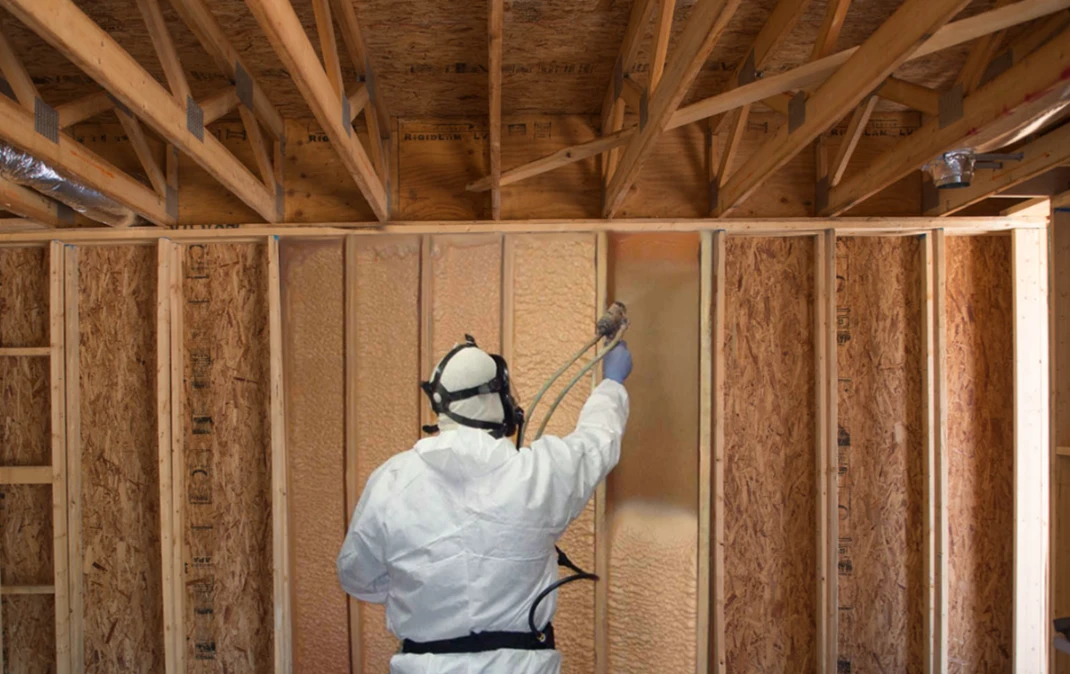
Spray foam insulation is an innovative solution that improves energy efficiency, enhances comfort, and provides long-term savings. Whether you’re building a new home, renovating an old one, or improving your commercial space, spray foam insulation offers a versatile and effective option. This guide explores its benefits, costs, and installation process in detail, giving you the insights you need to make informed decisions.
Spray foam insulation is a chemical-based product that expands on application to fill cracks, gaps, and cavities. It creates a seamless barrier, providing superior insulation and air sealing. This type of insulation comes in two main types:
Spray foam insulation reduces energy consumption by minimizing heat loss in winter and heat gain in summer. Its air-sealing properties prevent drafts and improve HVAC system efficiency.
Closed-cell spray foam acts as a barrier against moisture, reducing the risk of mold and mildew. This is especially beneficial in areas with high humidity.
By eliminating drafts and maintaining consistent indoor temperatures, spray foam insulation creates a more comfortable living or working environment.
The airtight seal prevents allergens, pollutants, and outdoor contaminants from entering your space, contributing to healthier indoor air quality.
Spray foam insulation doesn’t sag or degrade over time. Its longevity reduces the need for frequent maintenance or replacement.
Open-cell spray foam absorbs sound, making it an excellent choice for reducing noise between rooms or floors.
The cost of spray foam insulation varies based on factors such as material type, area size, and labor. On average, you can expect the following:
Before installation, the area must be cleared of debris, and surfaces should be clean and dry. Professionals will evaluate the site to determine the appropriate type and amount of spray foam.
Using specialized equipment, the foam is sprayed onto the surface. It quickly expands to fill gaps and hardens within minutes.
Once the foam has cured, excess material is trimmed, and the space is inspected for coverage. Any adjustments are made to ensure optimal performance.
While some homeowners consider DIY options, professional installation is recommended to ensure safety, accuracy, and compliance with local building codes. Premier Insulation Plus offers expert services tailored to your needs. Contact us at (850) 600-4402 or email [email protected] for more information.
Consider factors like your budget, location, and specific needs. Consult with a professional to determine the best option for your project.
Spray foam insulation contributes to energy efficiency, reducing your carbon footprint. Some formulations use environmentally friendly blowing agents and contain recycled materials. By minimizing heating and cooling demands, it supports sustainability.
Spray foam insulation offers numerous benefits, including energy savings, moisture resistance, and enhanced comfort. Whether you’re considering open-cell or closed-cell foam, Premier Insulation Plus can help you choose the best solution for your needs. Call us today at (850) 600-4402 or email [email protected] to learn more or schedule a consultation. Take the first step toward a more efficient and comfortable space.
Spray foam insulation can last 20-30 years or more with proper installation and maintenance.
Yes, when installed by professionals, it is safe and non-toxic after curing. Always ensure proper ventilation during installation.
While DIY kits are available, professional installation ensures accuracy and adherence to safety standards.
Spray foam provides superior air sealing and insulation performance compared to traditional materials like fiberglass or cellulose.
Although the upfront cost is higher, the long-term savings on energy bills and reduced maintenance make it a cost-effective solution.
Closed-cell spray foam acts as a moisture barrier, reducing the likelihood of mold growth.
It is sprayed onto surfaces using specialized equipment and expands to fill gaps and cracks.
Yes, but removal is labor-intensive and should be done by professionals.
Attics, basements, crawl spaces, and exterior walls are ideal areas for spray foam insulation.
Spray foam requires minimal maintenance. Periodic inspections ensure it remains intact and effective.